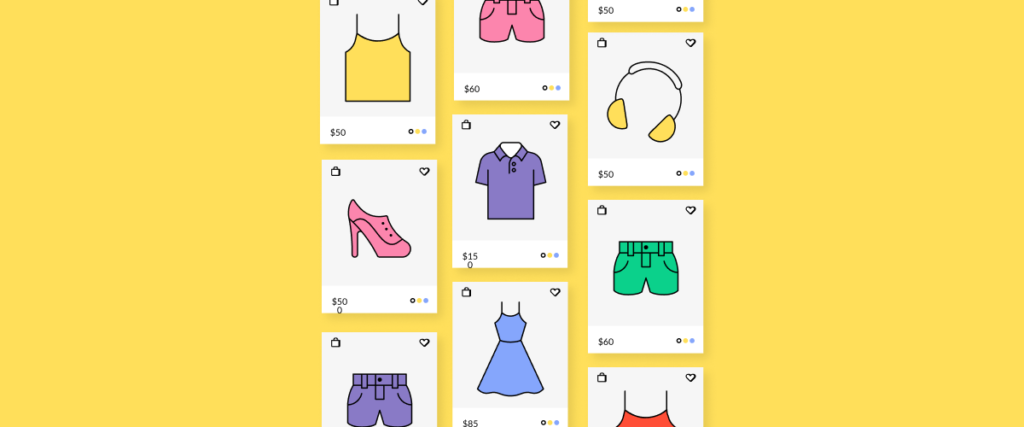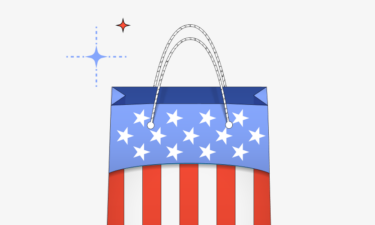Bonus material: Shopping Cart Abandonment Industry Benchmark Report
Cart abandonment is inevitable in eCommerce. No matter how clear you are about shipping costs or how well you optimize your checkout process, some users will choose not to complete a purchase after adding an item to their cart.
Those losses can have a significant impact on your bottom line. The average cart abandonment rate is more than 88%[*]. This means for every 1000 customers who add items to their digital shopping cart, only 120 convert.
Put another way, for every 1000 customers you convert, there are 8300 more that add items to their cart.
This is why many eCommerce brands implement strategies to reduce and recover abandoned carts, like sending cart reminder emails or using retargeting ads.
However, cart abandonment is about more than just lost revenue. It can impact your eCommerce store in a variety of other ways — none of which are good for your profitability, operations, or revenue.
#1. Lost Customer Lifetime Value
#2. Higher Customer Acquisition Costs
#3. Inventory Management & Availability Issues
#4. Skewed Website Data
#5. Lower Ad Click-Through-Rates
#6. Slower Website Speeds
#7. Higher Retargeting Costs
7 Cart Abandonment Effects Go Beyond Loss of Revenue
Cart abandonment costs businesses billions of dollars each year.
Some people might leave because they were browsing or they wanted to see what the final costs would be, with no intention of buying just yet. There might not be a lot you can do about those lost sales, other than retargeting them and trying to build a relationship over time.
However, there’s another type of abandonment you can do something about —- those lost to unexpected shipping fees, a clunky checkout process, or failing to understand and personalize the experience around the customer’s intent.
Read More: Customer Purchase Intention: Definition, Why (+ How) to Measure & Convert
Those users were close to converting. They saw your ads, they may have read your blog posts, or they saw your social media content. These are consumers who are in your target audience, know your brand, and are ready to make a purchase.
Losing those customers can have a huge impact on your revenue, but the costs of cart abandonment go beyond just lost sales.
Let’s look at seven cart abandonment effects beyond the loss of revenue and see how you can save those sales.
#1. Lost Customer Lifetime Value
Customer lifetime value calculates the profit margin your company can expect to earn from a customer throughout the entire relationship.
It’s a crucial metric for eCommerce stores because it helps you understand the true financial impact of marketing campaigns, encourages strategies focused on high-value customers and makes it far easier to balance short- and long-term business objectives.
Customers that abandon their online shopping carts are worth more than just their first purchase – you should also consider how much those customers might spend over the years and even how many friends they might lead to your brand.
In the long run, losing a possible customer can cost you thousands in the long term due to lower customer lifetime values.
Recovering just one abandoned cart could be worth thousands, not just the amount of your average order value.
How to fix it: There are two avenues for addressing this problem: by reducing the abandoned cart rate before the customer abandons to begin with, and to recover carts that have already been abandoned.
The most effective strategy for reducing abandoned carts proactively is to identify users who are about to abandon their carts and provide them with the minimal promotional offer they need to convert based on their intent.
The simplest way to recover abandoned carts is by setting up an abandoned cart email campaign, which sends customers a message reminding them to checkout. A small discount or recommending similar products might be all these customers need to take the final step.
#2. Higher Customer Acquisition Costs
Most eCommerce teams spend a significant portion of their marketing budgets building brand awareness and acquiring new customers through content marketing, paid acquisition channels, and social media and influencer marketing.
The issue? Just because an ad campaign or piece of content drives clicks, doesn’t mean it is driving sales. When customers make it all the way through the funnel but don’t convert, you’ve wasted the money on ads, content marketing, and lead nurturing.
Even worse, you might not realize you are wasting your budget. For example, an ad might drive massive amounts of traffic and clicks. It’s a great ad (you think), so you keep dumping money into it.
You don’t realize that those customers aren’t finishing the purchase process–you’re losing them to cart abandonment and driving up acquisition costs. Recovering those lost conversions can improve your acquisition costs and provide more accurate data about ad effectiveness.
How to fix it: To prevent abandoned carts from impacting your acquisition costs, make sure your checkout process is as smooth as possible and offer multiple payment processors to keep would-be customers from abandoning their carts.
#3. Inventory Management & Availability Issues
In June of 2020, TikTok users swarmed the merchandise site of then-President Trump.
Their goal wasn’t to actually order merchandise, but to add thousands (or even millions) of dollars in inventory to online carts and then abandon the purchase before checking out.
As a result, those carts reserved thousands of items that could not be sold to other consumers, effectively tying up the inventory as you might expect with a physical shopping cart.
Product unavailability is a major issue for eCommerce sites resulting in lost sales when real customers (who are ready to convert) can’t purchase their favorite items.
It’s particularly troublesome for travel sites, which might have a limited number of rooms or seats available. When customers add an item to their cart and never checkout, customers that would convert are told items are out of stock or their dates are unavailable.
How to fix it: Reducing cart abandonment isn’t just about recovering as many abandoned carts as possible, it also means stopping cart abandonment before it starts by being transparent about shipping costs, adding a “wishlist” feature so people can save items for later, and showing payment options upfront. Or, in the case of a TikTok trend, catching on to fake traffic before it causes major issues.
#4. Skewed Website Data
Speaking of fake traffic, not all traffic is good traffic. Bot traffic can cause major issues, especially when it comes to cart abandonment. For example, ensuring your biggest sale seasons bots might load up carts with items they never intend to purchase — which can impact product availability during your busiest season.
But, it doesn’t stop there.
Think about this — what is your most popular category page? What about your highest-selling product or top converting landing page? Abandoned carts can impact just about every stat in your analytics dashboard.
For example, bots or visitors that don’t convert might spend a great deal of time on a certain page, making you think the page is highly valuable to visitors. Or, they might exit on similar pages, making you think there is a problem on the page.
Bots or low-quality traffic that won’t convert not only impacts traffic metrics, but also KPIs, lead metrics, campaign performance, and marketing KPIs, resulting in your business creating strategies based on inaccurate data.
How to fix it: Consider using bot detection features that block bot traffic from your site to prevent skewed data.
#5. Lower Ad Click-Through-Rates
Most eCommerce teams focus on reducing cart abandonment rates by recovering those lost carts. In reality, it’s impossible to get your cart abandonment rate to zero.
Some of your online shoppers may be browsing with no intent to buy or comparison shopping with a future purchase in mind. Some may just be gathering information and educating themselves and haven’t reached the transactional stage yet.
The issue is those unsavable abandoned carts can mess with your ad audiences.
Every time someone adds an item to their cart, it creates history and cookies that can mislead your ad targeting. The ad platform, like Facebook, identifies those users as engagements and delivers ads to more people that look like those users.
As a result, your clickthrough rate and ROAS can plummet as you inadvertently target users with no intention of converting.
How to fix it: Instead of trying to save every single abandoned cart, look for ways to reduce cart abandonment earlier in the funnel by being transparent about shipping costs, offering a wishlist so visitors can save items for later, and using trust signals in the checkout flow.
By reducing cart abandonment before it starts, you’ll have cleaner targeting data and fewer abandoned carts.
#6. Slower Website Speeds
You likely already know slow website speeds can kill your conversion rates and lead to more abandoned carts. One study found that every additional second your site to load can cause a 4.4% drop in conversion rate[*].
And on the flip side, cart abandonment can actually cause slower site speeds? It can, in extreme cases.
High levels of traffic adding thousands of items to shopping carts can take up server bandwidth and slow your entire site down. That means actual customers are left with a frustrating, slow-loading site. As a result, they’re likely to head to your competitors.
This is particularly true during peak sales time, such as Black Friday or after a new product launch. This results in a terrible user experience for other site visitors.
How to fix it: Use the tips we’ve already mentioned to reduce cart abandonment before it starts — such as adding a wish list and being upfront about shipping costs. Blocking bot traffic can also speed up load times.
Also, consider switching to a hosting plan that can quickly scale when traffic spikes, such as a VPS cloud hosting plan. Using a more flexible hosting plan allows your site to access more server space and keep your site speed up.
#7. Higher Retargeting Costs
Abandoned carts cost money — and not just in lost sales.
Retargeting campaigns aimed at recovering lost sales can cost between $0.66 and $1.23 per click[*] — which is often less costly than other PPC and CPC ads.
However, comparing the cost of clicks between standard paid ads and retargeting ads fails to consider the money spent getting those visitors to your site the first time. So, businesses spend thousands to get visitors to their sites the first time — and then a few more dollars per click to bring them back.
How to fix it: Prevent the loss of those customers to begin with by lowering cart abandonment rates.
If you lose your customers to abandonment, it’s more difficult to recover those carts and bring that customer back to your eCommerce store. Focus on reducing cart abandonment rate first to harness those pivotal moments in the customer’s journey.
Avoid the Damaging Effects of Shopping Cart Abandonment
Cart abandonment rates have long been an issue for eCommerce companies.
But most teams only consider short-term revenue loss and overlook the other damaging effects of cart abandonment.
This becomes a problem when eCommerce teams undervalue the impact of reducing cart abandonment rates. When your team is evaluating its A/B testing pipeline or prioritizing experiments in your CRO strategy, consider that cart abandonment can have long-term (and costly) impacts.
Impacts including higher marketing costs, inventory management problems and even making strategic business decisions based on inaccurate data.
The easiest way to reduce cart abandonment? At the source.
Try these strategies to lower your cart abandonment rate.
Another quick-win tool that reduces cart abandonment is Intent-Based Promotions.
Our customers have used it to decrease cart abandonment by 15%+ and increase conversion rates by 8% or more.








